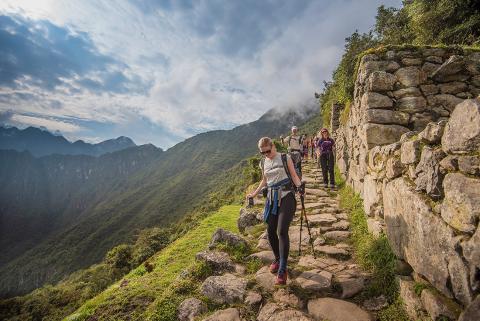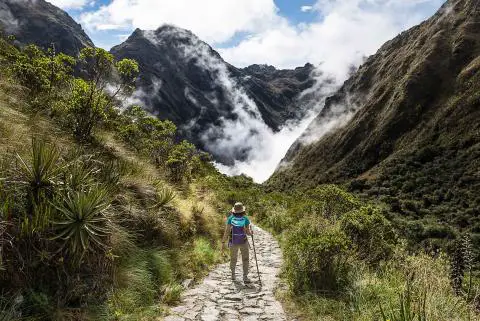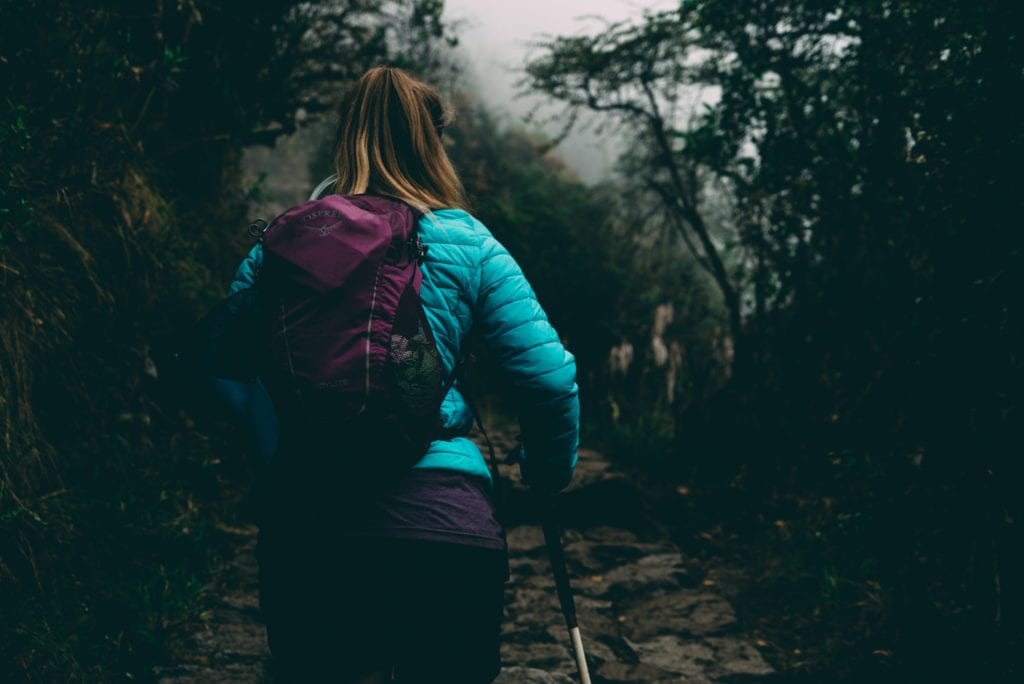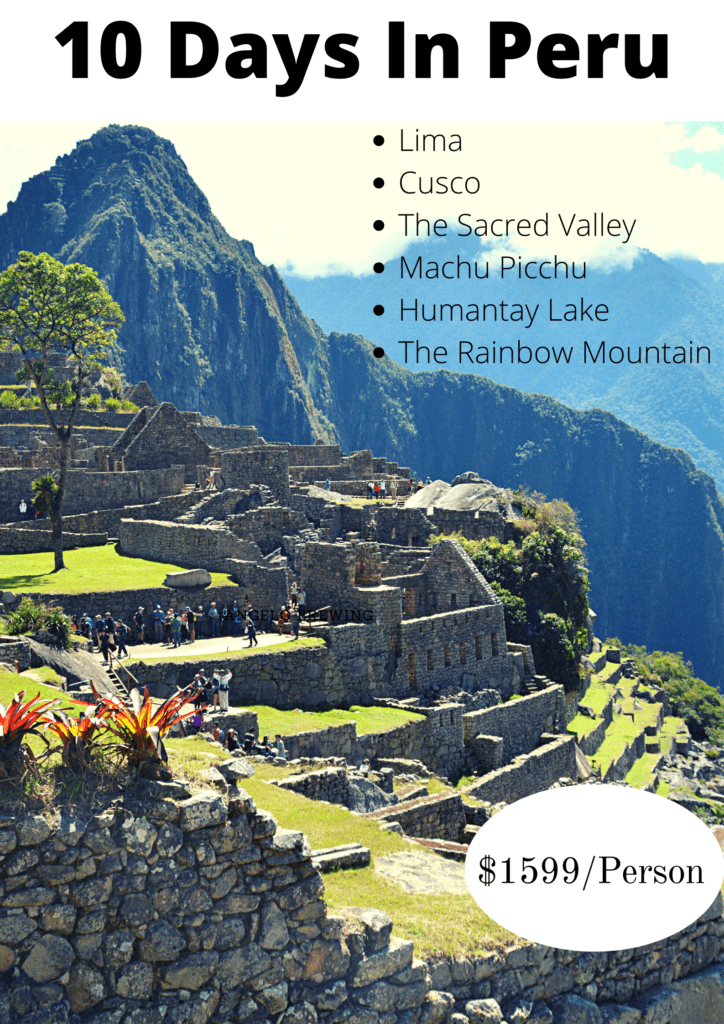Learn How to Prepare for the Inca Trail
James Bustamante is Native to New York but born to Peruvian parents. He has been traveling throughout Latin America since early 2003 and finally made his home in Peru. James has made his way by eating and traveling through almost every country in Central and South America.
Last Updated on December 5, 2022 by James Bustamante
Trekking the Inca Trail will be one of the most amazing experiences any hiker can have. The beauty of the trail can only be overshadowed by the historical relevance of its cobblestone paths leading to the Machu Picchu hike.
Booking one of the most popular treks in the world can be exciting. Just thinking about the new and exotic landscapes you’ll see can get anyone excited about the trip. However, some travelers might feel sufficiently prepared to hike four days from the Andes to the cloud forests of Machu Picchu.
Should I Prepare For The Inca Trail?
Yes, preparing for the Inca Trail will make your trekking experience a much better one. The classic four-day Inca Trail can be classified as a moderately challenging hike. However, for some travelers, the trek might even be easy if they are avid hikers in good physical condition.

Still, since the Inca Trail involves walking for several hours, sometimes up to 10 miles (15 km) a day, all potential hikers should train for 20-60 days before the trek date. It is an excellent idea to add the high elevation factor and the time it takes to acclimate, train, and prepare for the Inca Trail.
Training Regimen For The Inca Trail To Machu Picchu
It’s always a good idea to prepare for anything that has to do with the great outdoors. So that your time can be spent marveling at the sights and not feeling overworked on this grand adventure, it goes without saying that “How to prepare for the Inca trail?” is one of the most frequent questions from would-be trekkers. Below is a weightlifting program to help hikers fit for the Inca trail.
- Squats – body weight – lightweight – medium weight
- Lunges – bodyweight or lightweight
- Lying leg curls
- Deadlifts – low weight
- Pulldowns or Pull-ups
Squats: This is a great exercise to strengthen your glutes, quadriceps, and core. All these muscles are used for walking and will help you get through the more difficult points of the hike. Start with three sets of 10 repetitions with your desired weight. Make sure, to begin with, your body weight before adding any weights to the exercise.
Lunges: Think of them as a unilateral squat with more emphasis on your quadriceps. The same principle applies, begin with your body weight and do three sets of 10 repetitions before moving on to the weighted variety.
Lying Leg Curls: These should be done on a leg curl machine and help to build your hamstrings. Your hamstrings are used for stability and power when walking or running. Again, be with a lightweight and move on to something more challenging once you get the hang of it. In this exercise, you should also do three sets of 10 repetitions.
Deadlifts: Deadlifts strengthen your entire posterior chain from your rear shoulders, upper/middle/lower back, hamstrings, and glutes. This exercise should be performed in the gym under supervision by a professional to make there is no possible injury. They are a great addition to an Inca Trail preparation regimen. Try performing them once a week using three sets and five repetitions in each group.
Pulldowns: Pulldowns are a great exercise that targets your back. A strong back will help keep your posture when hiking, which is critical in avoiding injuries. Pulldowns can be performed in a commercial gym under the instruction of a professional. An alternative that you can do just about anywhere that has a bar would be pull-ups or chin-ups. However, these are more difficult to perform and take quite a bit more work. An excellent way to start with pulldowns is to go with three sets of 10 repetitions.
Push-ups: People either love or hate them, but the truth is that push-ups are a great anterior chain builder. This exercise targets the chest, shoulders, triceps, and core. It’s not just your lower body that is needed to be able to hike in high elevations. You will also need to carry a backpack that can seem like it weighs four times more than it does in high altitudes. Start with three sets of 5 repetitions and work your way up to 10 and then 20. Try doing these with your knees on the floor if they are too difficult.
The most important muscles you will use on the trail are your legs, so make sure to walk, run, and squat, anything that can give you an extra edge.
Try to walk uphill or climb stairs, as this will help stimulate the Inca Trail’s steepness. Additionally, walk for long periods without stopping since the Inca Trail route lasts 6 or 7 hours daily.
What To Pack For The Inca Trail?

Packing the right gear is essential to preparing for the Inca Trail. For example, footwear might be the most critical category in your packing list. Many times new hikers will go out and get a brand new pair of hiking shoes for the trek, thinking it is a good idea. This is a common mistake; new shoes will undoubtedly cause blisters and discomfort. If you need to buy hiking shoes, make sure to wear them in for 30 days before starting the trek. Below is a brief list of items to include when preparing for the Inca Trail.
- Hiking shoes – Walking Shoes (hiking boots aren’t essential)
- Trekking style pants – zipper pants
- Spare socks (it will get damp and muddy in some parts)
- A good coat or jacket
- Long sleeve t-shirts
- Comfortable shirts (Dressing in layers is key)
- A set of thermal shirts/pants or the overnight camps.
- sunscreen
- chapstick or lip balm
- Sleeping bags
- A hat or cap
- Sunglasses
- deodorant, toilet paper, toothbrush, toothpaste
Take weekly walking treks (in your worn-in boots) around areas similar to the trail. Practice and physical exercise are essential.
Avoid unhealthy foods and smoking before taking the trek. Eliminating unhealthy habits will make adapting to the high elevation in Cusco and on the trail easier.
Book Your Permits Months Ahead of The Trip
Preparing for the Inca Trail also means booking your permit. There are limited spaces each day that the MINCETUR (Ministry of Foreign Trade and Tourism) emits to Agencies like ours. Most people see 500 spaces and think that’s plenty, but permits are limited, and travelers must book them several months in advance. Be sure to ask our travel about available spots/days for the Classic Inca Trail or if you want more detailed information before setting your hopes on a specific date. Suppose you’d like to book the Inca Trail and include other destinations like the Amazon rainforest or Lima. In that case, several Peru tour packages include all of these services.
Acclimate To The Elevation
Last but not least, rest! Once you arrive in Cusco, make sure to take it easy for the first day or two. Eat light meals, don’t drink alcohol, take short/frequent walks, plenty of fluids, and drink coca tea or coffee to help with adaptation. Follow these simple steps, and travelers will be fully adapted quickly.
Conclusion
With these tips, you will have a much more pleasant experience on the Inca Trail to Machu Picchu. One last bit of information is always to have your camera or keep an additional battery for your mobile phone! If you want to know more about Peru, Cusco, and Machu Picchu Travel, check out the rest of our blog posts at Peru Travel Blog, and be sure to follow us on Facebook and Instagram for our special packages.




